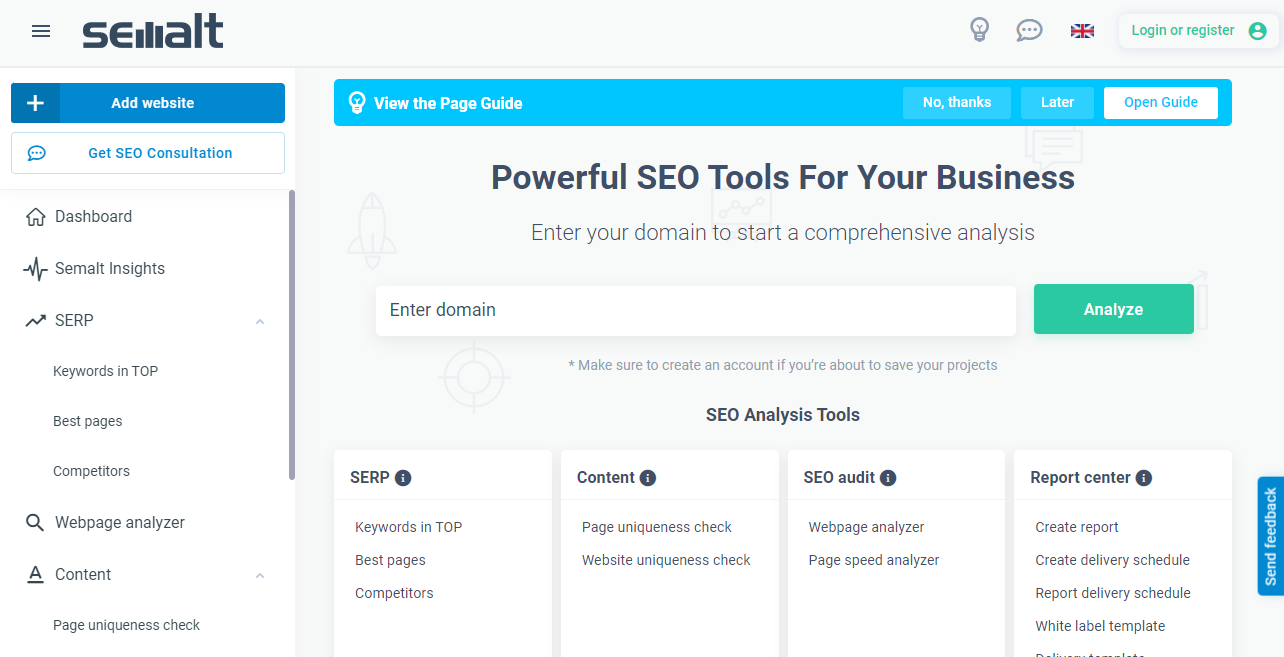Semalt: What Factors To Consider When Choosing A Place For A Link?

Links are of great importance in positioning, both internal and external links. This is indicated by the experience of people dealing with SEO on a daily basis, as well as all research on the location of websites in the Google search engine. However, the right number of links is not enough for the page to be displayed in a visible place. Sometimes even a large number of them can cause the site to lose its position. That is why the quality of links referring to the website is extremely important. What factors should be considered when choosing a place for a link? You can read about it below.
The Google search engine was created in the 1990s. From the very beginning, one of the main assumptions was that the browser should be able to assess the value of a given website also in connection with other websites. Here, the main criterion was backlinks that allowed you to go from one page to another. So is it also now! Appropriate, quality linking will allow you to stay ahead of the competition. However, this requires taking into account several important factors.
What should you pay attention to?
Just a few years ago, it was enough to focus only on the number of published links in various places. Unfortunately, this led to following the line of least resistance and spamming practices. In addition, it did not harmonize with the idea that guided Google.
In 2012, an algorithm update was implemented with the graceful name Penguin. It was intended to protect the network from excessive, low-value linking. Initially linked pages with poor quality links could even be punished with removal from the index. Currently, such drastic penalties are no longer applied, but their quality is still being assessed and may have a negative impact on positioning on Google.
The link-building process is so important that it's a shame to waste resources on posting low-quality links. It is better to invest them in quality activities. When looking for portals on which you can link your website, you should be guided by the question of whether it is a website thematically related to your industry. We should not post topics related to the military on pages dedicated to music composition, or promote an architectural firm on a website dedicated to gastronomy.
Choosing websites is not the end of the job. Once you have prepared a list of websites that you want to consider, you should evaluate their parameters, such as the:
- traffic and number of unique users of the website (usually based on Google Analytics data),
- domain link profile, which we evaluate thanks to The Dedicated SEO Dashboard tool,
- website visibility in the Google search engine.
In addition, it is worth bearing in mind the content created by users of a given brand, the ratio of outgoing to incoming links, as well as the presence of competition on the web.
Each of these factors is interdependent, so they should be looked at comprehensively. What exactly do they mean?
Factors to be analyzed

1.Traffic and number of users
When browsing the offers of sponsored articles, the parameters determining the traffic on the website as well as the unique number of users should be available. Most often, they concern the last period and are confirmed by data from Google Analytics. It is also worth paying attention to other metrics available in Analytics, such as reach and activity in the social media of a given brand.
To know the offers and parameters, you can also use tools such as Semalt's Dedicated SEO Dashboard, which offers a huge, up-to-date database of links that you can use along with their parameters.
Website traffic is important because it shows how popular a particular website is. The more traffic and the more the topic is in line with what they can find on your site, the greater the chance of engaging users and redirecting some traffic to your website.
2. Domain link profile
An extremely important element in building visibility in the search engine is the link profile of the domain whose services we want to use. As in the entire link-building process, you care about quality, not just the number of domains that link to the page. You can verify them with tools like the DSD.
The metrics worth paying attention to are:
- Domain Rating (DR) - presents the strength of the domain on a 100-point scale. In theory, the higher the DR, the better it is for you.
- Backlinks - this is information that allows you to see from which pages the links to the portal are directed, and how the URLs are linked.
- Referring domains - shows the number of domains on which at least one link of the analyzed page is located. Here it is also worth paying attention to different domains, anchor texts, as well as destination addresses of links.
This stage of work may take you a lot of time, but the benefits of it will definitely be reflected in the results. When working, it is worth using different tools, and also bear in mind that the results may be incomplete due to blocking by various systems.
3. Website visibility in the Google search engine

We can measure visibility thanks to the DSD tool. All phrases for which a particular domain ranks affect the display on Google. It is especially important to analyze the number of phrases in the TOP 10 because they generate the largest organic traffic.
When analyzing, special attention should be paid to phrases that are directly related to the subject of the website and our industry. Let us remember that portals thematically related to our website also increase the chance of reaching those most interested, who will be willing to buy in the first place. They will definitely have the highest percentage, compared to pages that are more general or not related to the topic of our site at all.
It is also worth bearing in mind the estimated organic traffic on the website and comparing it with the results of Google Analytics. We will also see how specific results have changed over the years. If we see a decrease, it may mean that Google's algorithms value the page less and its resources have already been used.
4. User-Generated Content
Any content that users create, such as comments and posts on social media, opinions about products and services, and posts on discussion forums about your brand, affects the visibility of your website. This tells the algorithms that your site is valuable. Make sure users want to create and share such content.
5. Indexation
Remember that it matters where exactly on the site the link to your site will be implemented. The Google algorithm will react much better to entries on the main pages than in places where you have to "click". So make sure your links are visible.
6. Internal linking
In addition to external linking, you can't forget about internal linking. However, here it is also important to remember that it is not just about placing a link on any page. Create a small internal linking strategy, create a hierarchy of categories, and refer to high-quality subpages. Also remember about "orphans", i.e. subpages that cannot be reached via internal links. This is important because they are of great importance for SEO and can be negatively read by Google robots.
7. Outbound links vs. inbound links
Don't forget to include two types of links: incoming and outgoing. Both of them guarantee proper positioning. The lack of incoming links may indicate to us that the site is used onlr-Generay for sponsored publications. That is why it is so important to consider different linking models: incoming to the site, external linking, as well as appropriate internal linking.
8. Competition
It is worth getting to know our competition in detail. If we have a relinking tool, we can get to know the domains where our competition's links are already located. It is then worth considering whether we should also publish in this place, whether it will bring us benefit or may be a loss for us.
Summary
All the factors described above, such as traffic and number of users, internal and external linking, website visibility in the Google search engine, or User Generated Content, should be taken into account when developing a link building plan. Thanks to The Dedicated SEO Dashboard's functionalities, you have access to all data from over 40,000 websites that are in the database. The resources collected in the DSD are updated on an ongoing basis, so you can always find up-to-date data on the websites you are interested in there.
